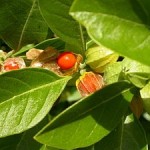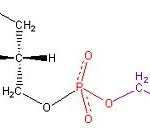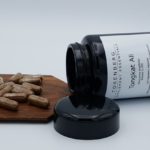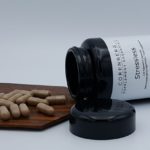
Rhodiola rosea is used to fight stress and to strengthen the natural defense. However, the recommended dosages differ considerably in some cases. The products offered on the market contain a wide variety of quantities and qualities of roseroot extract. This and the intended effect of Rhodiola rosea result in widely differing recommendations for dosing. Side effects can be avoided by taking the preparation at the right time of day.
Here is how to use Rhodiola rosea correctly:
Quantity of Rhodiola extract alone is insignificant
The products offered usually contain extracts from the root of the roseroot plant (Rhodiola rosea). The amounts range from a few thousandths of a gram (mg) in some mixed preparations to over 500 mg in a single capsule. For the very low additions of Rhodiola extract in some mixed preparations, the Rhodiola-specific efficacy may be doubted.
However, products with high mg values per capsule or daily dose do not have to be optimally effective, as extracts with a low concentration of active ingredients are often used, especially for cheap products. Such a Rhodiola preparation contains only small amounts of the value-determining active ingredients, despite high mg specifications for the extract.
Content of Rosavin and Salidroside essential
According to current knowledge, two ingredients from the group of phenolic glycosides are responsible for the effect of Rhodiola rosea:
Active ingredients of Rhodiola rosea:
- Rosavin:
This substance is contained in most commercially available Rhodiola extract products with 3%. Sometimes you will also find cheap products with only 1% or less. Very high-quality products, on the other hand, have a content of 5% Rosavin. - Salidroside:
Most Rhodiola extracts contain around 1% salidroside, often significantly less. High-quality Rhodiola extracts, on the other hand, contain up to 3% salidroside.
Dosage of Rhodiola rosea
The effect of Rhodiola rosea is thus determined by the content of salidroside and rosavin. Therefore, it is also clear that the effective daily dose depends on the quality of the Rhodiola extract used.
The standardization of Rhodiola extract is based on the Rosavin content, usually standardizations with 1%, 2%, 3% and 5% are commercially available. Here is an overview of the dosing recommendations:
Dosages for Rhodiola rosea:
- 1% Rosavin:
For extracts with only 1% Rosavin, dosages from 400 mg to 1000 mg daily have been established. - 2% Rosavin:
For extracts with 2% Rosavin, dosages from 200 mg to 500 mg daily are recommended. - 3% Rosavin:
For extracts with 3% Rosavin, dosages from 150 mg to 400 mg daily are recommended. - 5% Rosavin:
For extracts with 5% Rosavin dosages from about 100 mg to 300 mg daily are recommended.
The quantities indicated relate to the intake over a longer periodof time. Rhodiola rosea is often taken continuously over several months.
Continuous intake over a longer period (at least a few weeks) is preferable to short-term, event-related use, since Rhodiola rosea takes some time to develop its full effect. Therefore, expect a response time of one to two weekswhen taking the preparation until you benefit fully from the effect of Rhodiola rosea.
The above values for the dosage of Rhodiola rosea are cirka-values derived from experience. If necessary, the dose can also be significantly increased, provided that the extract is well tolerated. For example, with above-average body weight, a correspondingly adjusted dosage may be necessary.
Optimal intake of Rhodiola rosea
Rhodiola rosea is best taken on an empty stomach in the morning. This supports the optimal absorption of the active ingredients. In addition, Rhodiola has a stimulating effect at higher dosages, so that sensitive individuals should not take Rhodiola in the evening.
Today, the most widely offered Rhodiola rosea capsules greatly facilitate the dosage of the extract. More rarely, roseroot is offered in tablet form or as a powder.
Side Effects of Rhodiola rosea (Roseroot)
Roseroot has no side effects,aside from a difficulty in falling asleep after taking high doses before going to bed. Furthermore, Rhodiola rosea can enhance the stimulating effect of other substances (e.g. caffeine).
Problems can therefore be easily avoided by taking Rhodiola rosea in the first half of the day and not combining it with larger amounts of caffeine.
Conclusion
The effect of Rhodiola rosea depends not only on the dosage but also on the quality of the extract used. It usually takes one to two weeks to fully develop the effect, so that it is recommended to take it over a longer period of time. No side effects are to be expected for dosages within the specified limits for the respective standardization.
CORENBERG® Supplement Essentials is an Austrian company that provides exclusive food supplements for an active lifestyle full of energy, for stress relief, and for improved regeneration. Free express shipping EU-wide with DPD. Fast and free delivery to Switzerland, Liechtenstein and Norway.










